Part I Dr. Agata Jurkowska-Gomułka. Protection of
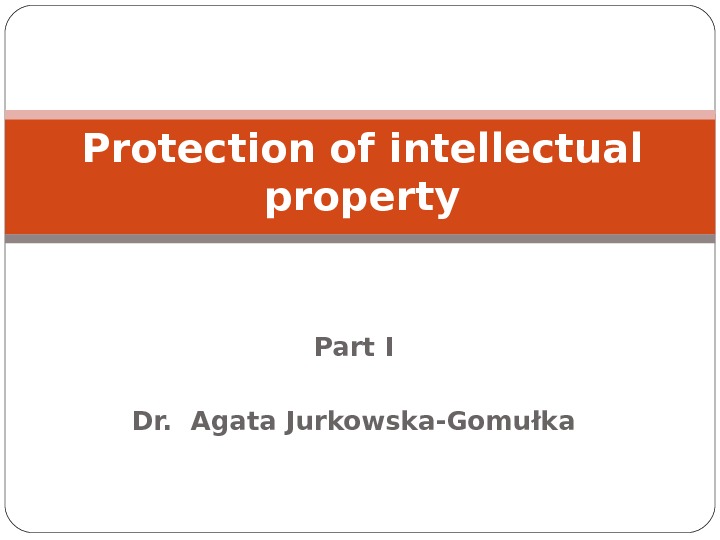

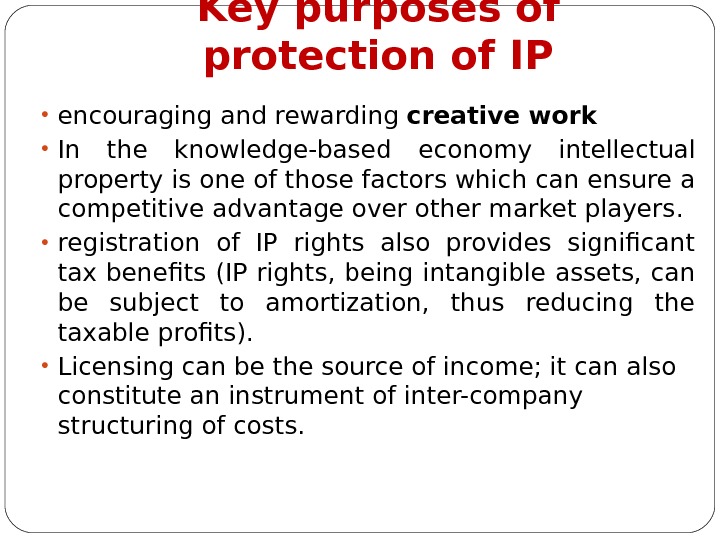
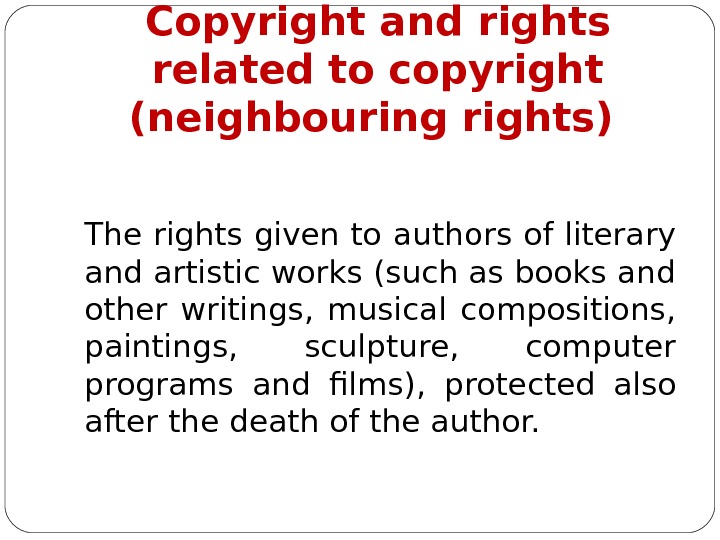
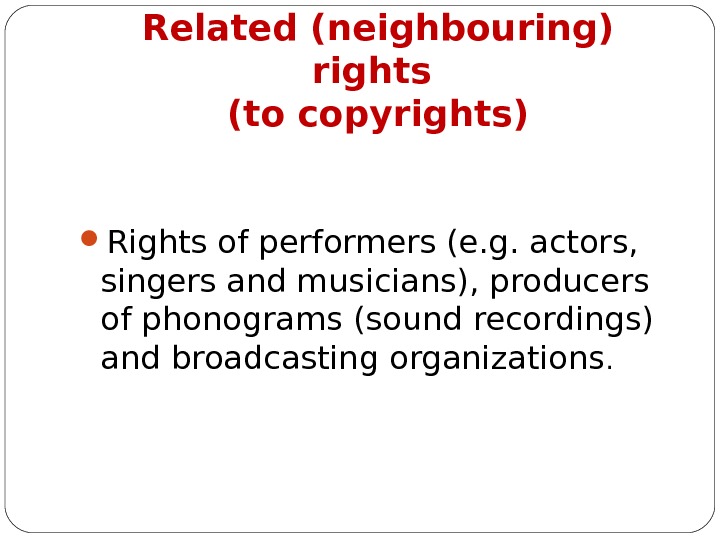
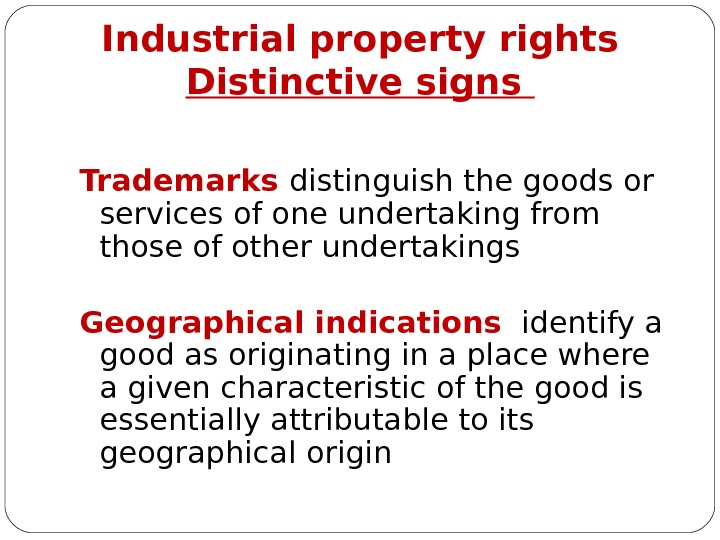
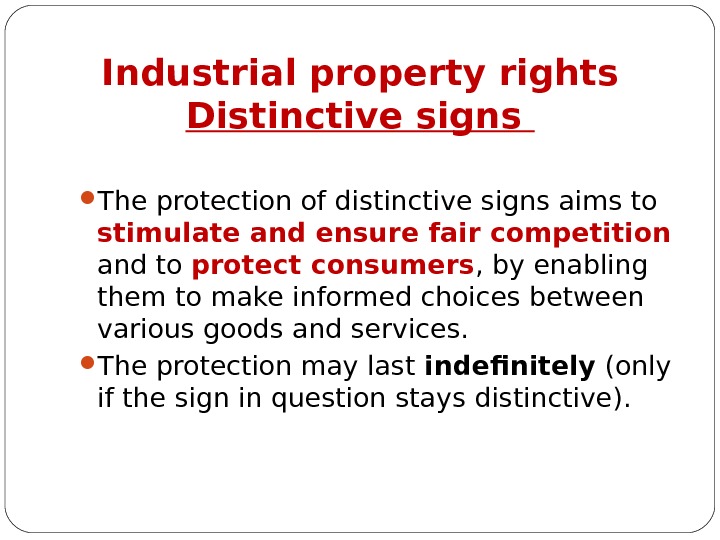
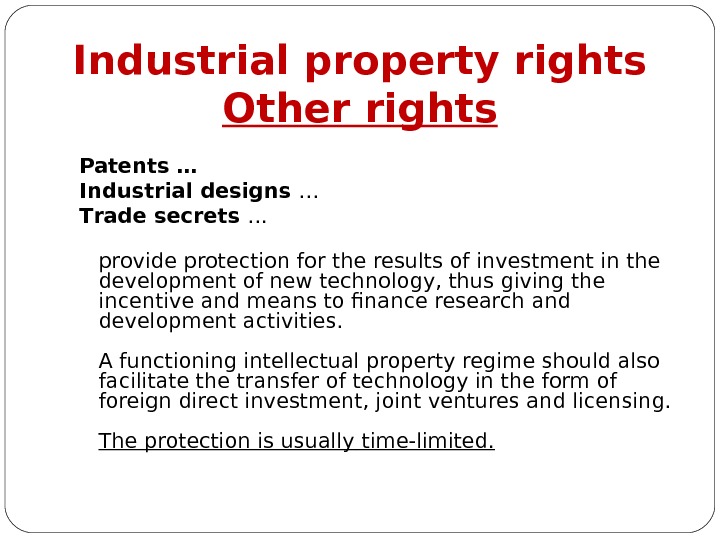
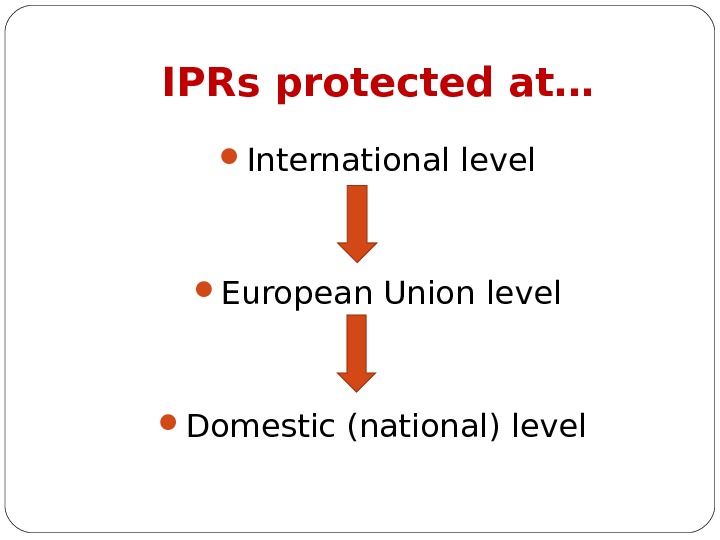
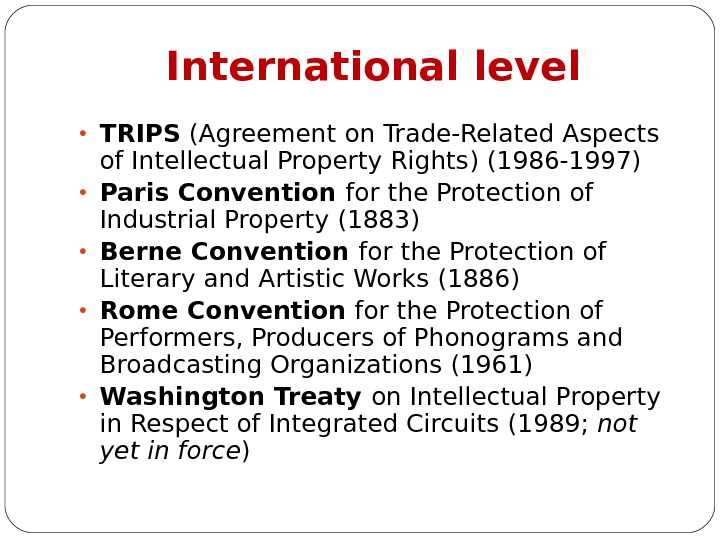
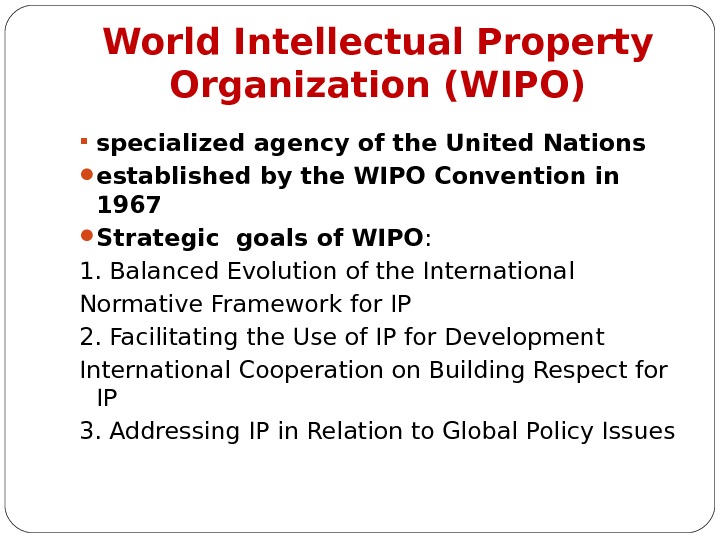
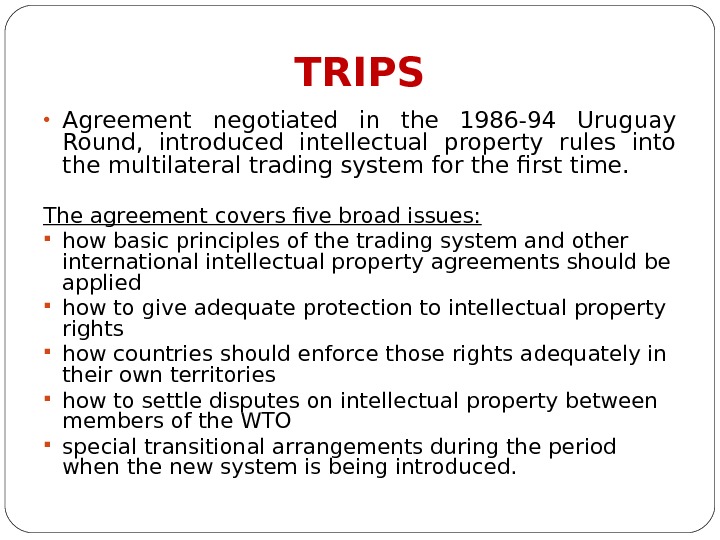

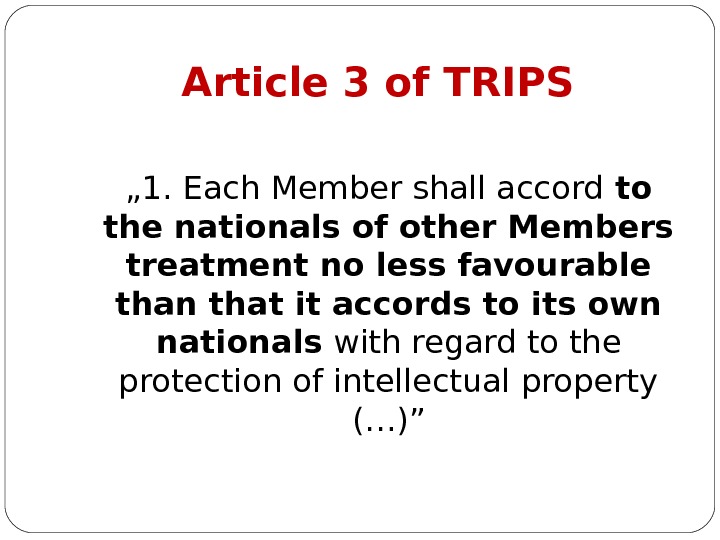
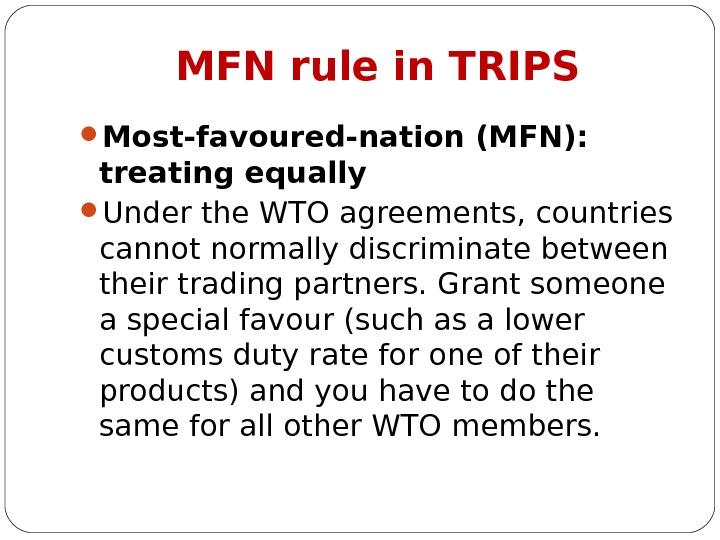
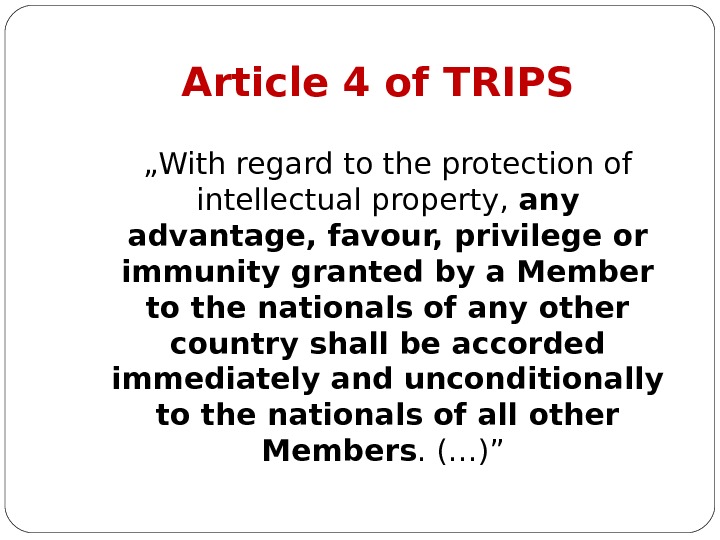

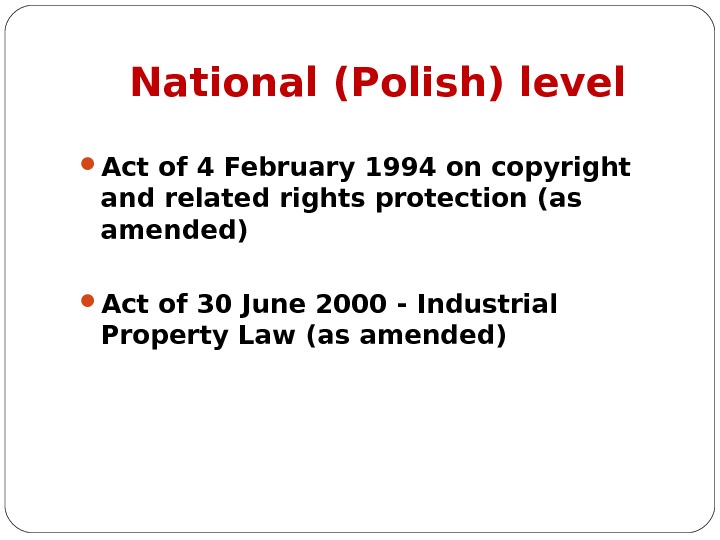
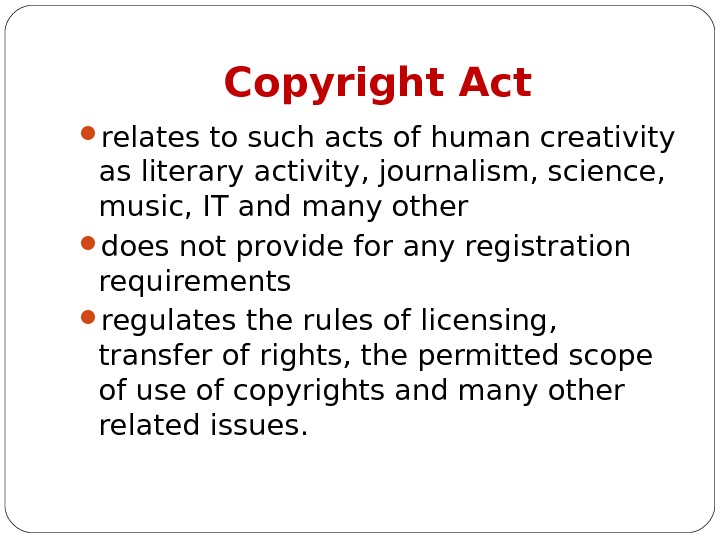
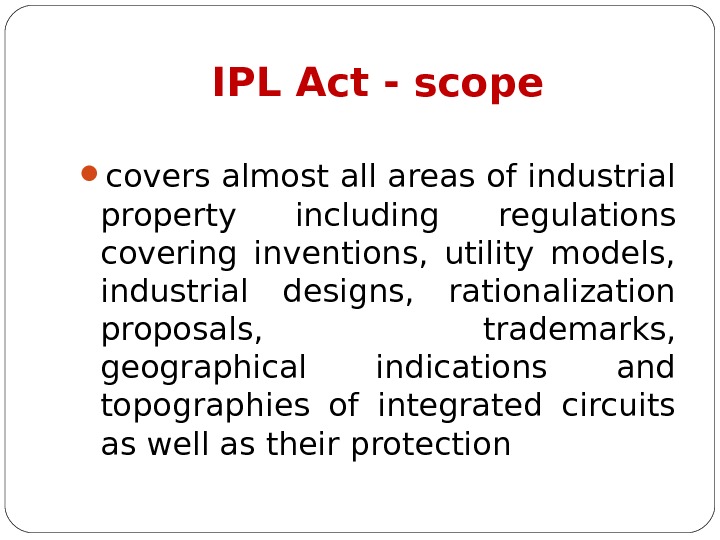


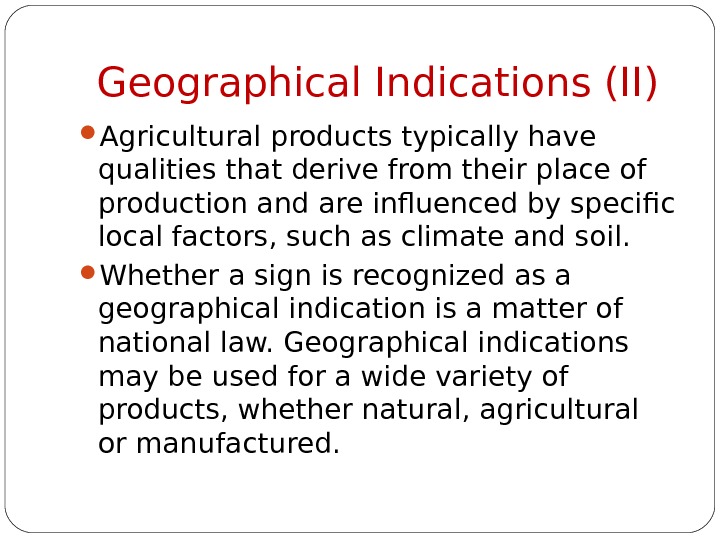
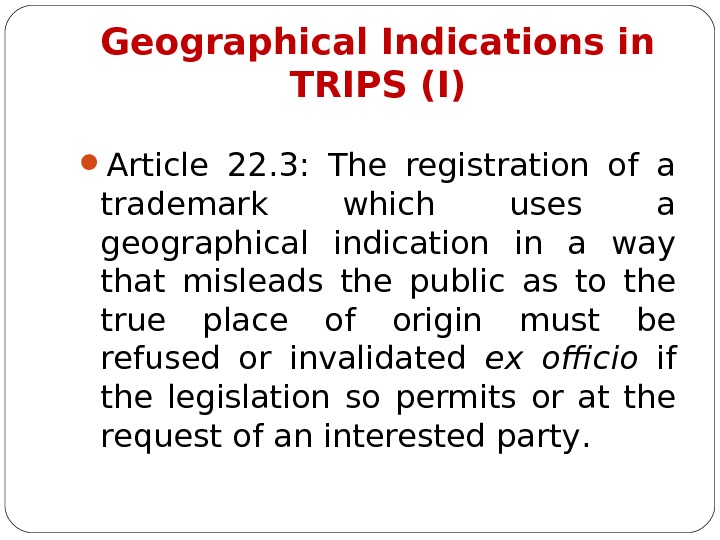

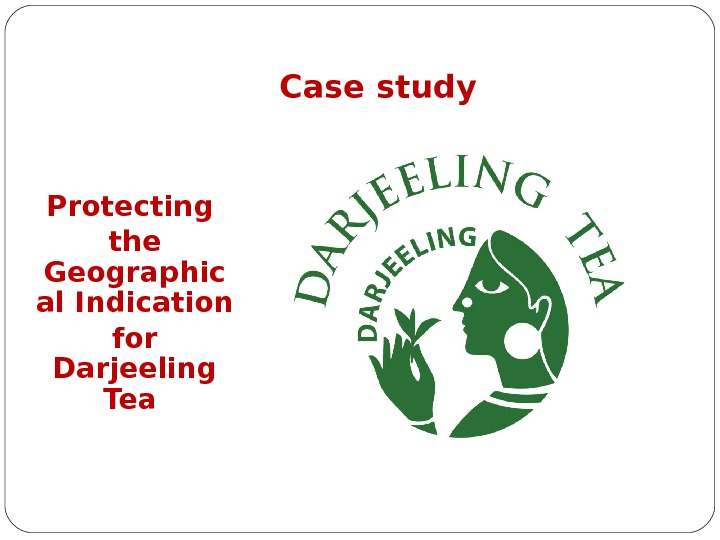
1_protection_of_intellectual_property.ppt
- Размер: 618.5 Кб
- Количество слайдов: 26
Описание презентации Part I Dr. Agata Jurkowska-Gomułka. Protection of по слайдам
 Part I Dr. Agata Jurkowska-Gomułka. Protection of intellectual property
Part I Dr. Agata Jurkowska-Gomułka. Protection of intellectual property
 What are intellectual property rights? R ights given to persons over the creations of their minds. They usually give the creator an exclusive right over the use of his/her creation for a certain period of time.
What are intellectual property rights? R ights given to persons over the creations of their minds. They usually give the creator an exclusive right over the use of his/her creation for a certain period of time.
 Key purpose s of protection of IP • e ncourag ing and reward ing creative work • In the knowledge-based economy intellectual property is one of those factors which can ensure a competitive advantage over other market players. • registration of IP rights also provides significant tax benefits ( IP rights, being intangible assets, can be subject to amortization, thus reducing the taxable profits ). • Licensing can be the source of income; it can also constitute an instrument of inter-company structuring of costs.
Key purpose s of protection of IP • e ncourag ing and reward ing creative work • In the knowledge-based economy intellectual property is one of those factors which can ensure a competitive advantage over other market players. • registration of IP rights also provides significant tax benefits ( IP rights, being intangible assets, can be subject to amortization, thus reducing the taxable profits ). • Licensing can be the source of income; it can also constitute an instrument of inter-company structuring of costs.
 Copyright and rights related to copyright (neighbouring rights) The rights given to authors of literary and artistic works (such as books and other writings, musical compositions, paintings, sculpture, computer programs and films) , protected also after the death of the author.
Copyright and rights related to copyright (neighbouring rights) The rights given to authors of literary and artistic works (such as books and other writings, musical compositions, paintings, sculpture, computer programs and films) , protected also after the death of the author.
 R elated (neighbouring ) rights (to copyrights) R ights of performers (e. g. actors, singers and musicians), producers of phonograms (sound recordings) and broadcasting organizations.
R elated (neighbouring ) rights (to copyrights) R ights of performers (e. g. actors, singers and musicians), producers of phonograms (sound recordings) and broadcasting organizations.
 Industrial property rights Distinctive signs Trademarks distinguish the goods or services of one undertaking from those of other undertakings Geographical indications identify a good as originating in a place where a given characteristic of the good is essentially attributable to its geographical origin
Industrial property rights Distinctive signs Trademarks distinguish the goods or services of one undertaking from those of other undertakings Geographical indications identify a good as originating in a place where a given characteristic of the good is essentially attributable to its geographical origin
 Industrial property rights Distinctive signs The protection of distinctive signs aims to stimulate and ensure fair competition and to protect consumers , by enabling them to make informed choices between various goods and services. The protection may last indefinitely (only if the sign in question stays distinctive ).
Industrial property rights Distinctive signs The protection of distinctive signs aims to stimulate and ensure fair competition and to protect consumers , by enabling them to make informed choices between various goods and services. The protection may last indefinitely (only if the sign in question stays distinctive ).
 Industrial property rights Other rights Patents … I ndustrial designs … T rade secrets … provide protection for the results of investment in the development of new technology, thus giving the incentive and means to finance research and development activities. A functioning intellectual property regime should also facilitate the transfer of technology in the form of foreign direct investment, joint ventures and licensing. The protection is usually time-limited.
Industrial property rights Other rights Patents … I ndustrial designs … T rade secrets … provide protection for the results of investment in the development of new technology, thus giving the incentive and means to finance research and development activities. A functioning intellectual property regime should also facilitate the transfer of technology in the form of foreign direct investment, joint ventures and licensing. The protection is usually time-limited.
 IPRs protected at… International level European Union level Domestic (national) level
IPRs protected at… International level European Union level Domestic (national) level
 International level • TRIPS ( Agreement on Trade-Related Aspects of Intellectual Property Rights ) (1986 -1997) • Paris Convention for the Protection of Industrial Property (1883) • Berne Convention for the Protection of Literary and Artistic Works (1886) • Rome Convention for the Protection of Performers, Producers of Phonograms and Broadcasting Organizations (1961) • Washington Treaty on Intellectual Property in Respect of Integrated Circuits (1989; not yet in force )
International level • TRIPS ( Agreement on Trade-Related Aspects of Intellectual Property Rights ) (1986 -1997) • Paris Convention for the Protection of Industrial Property (1883) • Berne Convention for the Protection of Literary and Artistic Works (1886) • Rome Convention for the Protection of Performers, Producers of Phonograms and Broadcasting Organizations (1961) • Washington Treaty on Intellectual Property in Respect of Integrated Circuits (1989; not yet in force )
 World Intellectual Property Organization (WIPO) specialized agency of the United Nations established by the WIPO Convention in 1967 Strategic goals of WIPO : 1. Balanced Evolution of the Internationa l Normative Framework for IP 2. Facilitating the Use of IP for Developmen t International Cooperation on Building Respect for IP 3. Addressing IP in Relation to Global Policy Issues
World Intellectual Property Organization (WIPO) specialized agency of the United Nations established by the WIPO Convention in 1967 Strategic goals of WIPO : 1. Balanced Evolution of the Internationa l Normative Framework for IP 2. Facilitating the Use of IP for Developmen t International Cooperation on Building Respect for IP 3. Addressing IP in Relation to Global Policy Issues
 TRIPS • Agreement negotiated in the 1986 -94 Uruguay Round, introduced intellectual property rules into the multilateral trading system for the first time. The agreement covers five broad issues: how basic principles of the trading system and other international intellectual property agreements should be applied how to give adequate protection to intellectual property rights how countries should enforce those rights adequately in their own territories how to settle disputes on intellectual property between members of the WTO special transitional arrangements during the period when the new system is being introduced.
TRIPS • Agreement negotiated in the 1986 -94 Uruguay Round, introduced intellectual property rules into the multilateral trading system for the first time. The agreement covers five broad issues: how basic principles of the trading system and other international intellectual property agreements should be applied how to give adequate protection to intellectual property rights how countries should enforce those rights adequately in their own territories how to settle disputes on intellectual property between members of the WTO special transitional arrangements during the period when the new system is being introduced.
 National treatment rule in TRIPS Imported and locally-produced goods should be treated equally — at least after the foreign goods have entered the market. The same should apply to foreign and domestic services, and to foreign and local trademarks, copyrights and patents.
National treatment rule in TRIPS Imported and locally-produced goods should be treated equally — at least after the foreign goods have entered the market. The same should apply to foreign and domestic services, and to foreign and local trademarks, copyrights and patents.
 Article 3 of TRIPS „ 1. Each Member shall accord to the nationals of other Members treatment no less favourable than that it accords to its own nationals with regard to the protectionof intellectual property (…)”
Article 3 of TRIPS „ 1. Each Member shall accord to the nationals of other Members treatment no less favourable than that it accords to its own nationals with regard to the protectionof intellectual property (…)”
 MFN rule in TRIPS Most-favoured-nation (MFN): treating equally Under the WTO agreements, countries cannot normally discriminate between their trading partners. Grant someone a special favour (such as a lower customs duty rate for one of their products) and you have to do the same for all other WTO members.
MFN rule in TRIPS Most-favoured-nation (MFN): treating equally Under the WTO agreements, countries cannot normally discriminate between their trading partners. Grant someone a special favour (such as a lower customs duty rate for one of their products) and you have to do the same for all other WTO members.
 Article 4 of TRIPS „ With regard to the protection of intellectual property, any advantage, favour, privilege or immunity granted by a Member to the nationals of any other country shall be accorded immediately and unconditionally to the nationals of all other Members. (…)”
Article 4 of TRIPS „ With regard to the protection of intellectual property, any advantage, favour, privilege or immunity granted by a Member to the nationals of any other country shall be accorded immediately and unconditionally to the nationals of all other Members. (…)”
 EU level Directive 2001/29/EC on the harmonisation of certain aspects of copyright and related rights in the information society Council Regulation (EC) No 40/94 on the Community trade mark Council Regulation (EC) No 6/2002 on Community designs … others
EU level Directive 2001/29/EC on the harmonisation of certain aspects of copyright and related rights in the information society Council Regulation (EC) No 40/94 on the Community trade mark Council Regulation (EC) No 6/2002 on Community designs … others
 National (Polish) level Act of 4 February 1994 on copyright and related rights protection (as amended) Act of 30 June 2000 — Industrial Property Law (as amended)
National (Polish) level Act of 4 February 1994 on copyright and related rights protection (as amended) Act of 30 June 2000 — Industrial Property Law (as amended)
 Copyright Act relates to such acts of human creativity as literary activity, journalism, science, music, IT and many other does not provide for any registration requirements regulates the rules of licensing, transfer of rights, the permitted scope of use of copyrights and many other related issues.
Copyright Act relates to such acts of human creativity as literary activity, journalism, science, music, IT and many other does not provide for any registration requirements regulates the rules of licensing, transfer of rights, the permitted scope of use of copyrights and many other related issues.
 IPL Act — scope covers almost all areas of industrial property including regulations covering inventions, utility models, industrial designs, rationalization proposals, trademarks, geographical indications and topographies of integrated circuits as well as their protection
IPL Act — scope covers almost all areas of industrial property including regulations covering inventions, utility models, industrial designs, rationalization proposals, trademarks, geographical indications and topographies of integrated circuits as well as their protection
 IPL Act — functions granting certain entities temporary exclusive rights to use protected property, thus giving them the possibility to use such for commercial purposes and, in turn, encouraging work on innovations as well as their financing. regulating the rights of authors of intellectual property as well as the rights and obligations of business entities organising creative work and ensuring material resources, in particular financial resources, for the performance of such tasks.
IPL Act — functions granting certain entities temporary exclusive rights to use protected property, thus giving them the possibility to use such for commercial purposes and, in turn, encouraging work on innovations as well as their financing. regulating the rights of authors of intellectual property as well as the rights and obligations of business entities organising creative work and ensuring material resources, in particular financial resources, for the performance of such tasks.
 Geographical indications (I) a sign used on goods that have a specific geographical origin and possess qualities, reputation or characteristics that are essentially attributable to that place of origin. a geographical indication includes usually the name of the place of origin of the goods. Examples: “Champagne”, “Tequila” or “Roquefort”.
Geographical indications (I) a sign used on goods that have a specific geographical origin and possess qualities, reputation or characteristics that are essentially attributable to that place of origin. a geographical indication includes usually the name of the place of origin of the goods. Examples: “Champagne”, “Tequila” or “Roquefort”.
 Geographical Indications (II) A gricultural products typically have qualities that derive from their place of production and are influenced by specific local factors, such as climate and soil. Whether a sign is recognized as a geographical indication is a matter of national law. Geographical indications may be used for a wide variety of products, whether natural, agricultural or manufactured.
Geographical Indications (II) A gricultural products typically have qualities that derive from their place of production and are influenced by specific local factors, such as climate and soil. Whether a sign is recognized as a geographical indication is a matter of national law. Geographical indications may be used for a wide variety of products, whether natural, agricultural or manufactured.
 Geographical Indications in TRIPS (I) Article 22. 3 : The registration of a trademark which uses a geographical indication in a way that misleads the public as to the true place of origin must be refused or invalidated ex officio if the legislation so permits or at the request of an interested party.
Geographical Indications in TRIPS (I) Article 22. 3 : The registration of a trademark which uses a geographical indication in a way that misleads the public as to the true place of origin must be refused or invalidated ex officio if the legislation so permits or at the request of an interested party.
 Geographical Indications in TRIPS (II) Article 23 : interested parties must have the legal means to prevent the use of a geographical indication identifying wines for wines not originating in the place indicated by the geographical indication. This applies even where the public is not being misled, there is no unfair competition and the true origin of the good is indicated or the geographical indication is accompanied be expressions such as “kind”, “type”, “style”, “imitation” or the like.
Geographical Indications in TRIPS (II) Article 23 : interested parties must have the legal means to prevent the use of a geographical indication identifying wines for wines not originating in the place indicated by the geographical indication. This applies even where the public is not being misled, there is no unfair competition and the true origin of the good is indicated or the geographical indication is accompanied be expressions such as “kind”, “type”, “style”, “imitation” or the like.
 Case study Protecting the Geographic al Indication for Darjeeling Tea
Case study Protecting the Geographic al Indication for Darjeeling Tea
